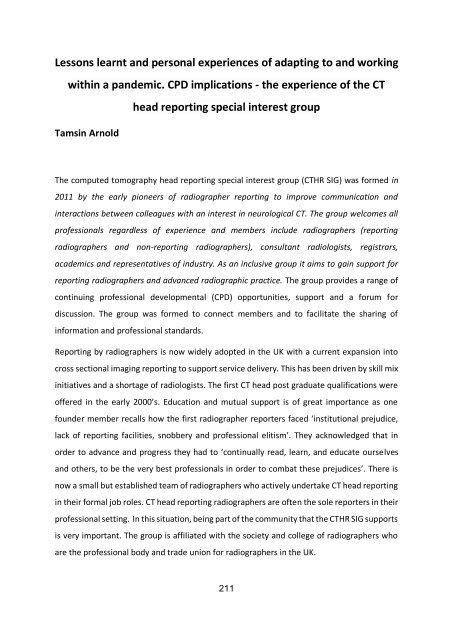ISRRT_COVID-19_book
Create successful ePaper yourself
Turn your PDF publications into a flip-book with our unique Google optimized e-Paper software.
disruptive effect at a personal, systemic and institutional level for both students and<br />
academics.<br />
Strategies used to increase student engagement<br />
I had to take some time for deep reflection on how I will overcome students’ concerns without<br />
burning out or have students that do not know how to tackle the modules I teach. This was<br />
no easy feat. Sometimes I had to address a challenge in the moment as they arose. To follow<br />
are strategies that I used to enhance student engagement. Some strategies provided below<br />
developed over many iterations as the learning and teaching journey unfolded over the<br />
academic year. I also recognise that different strategies are more effective in different<br />
contexts but given my context these proved useful and effective to increase student<br />
engagement in the online delivery of the modules that I am responsible for. The modules in<br />
which I used these strategies were related to pathology, imaging analysis, pattern recognition,<br />
and professional practice and ethics.<br />
I used a mix of both synchronous and asynchronous activities. This allowed students to<br />
complete asynchronous tasks and activities in their own time with the proviso of submitting<br />
any work required by the due date. Synchronous activities held on Microsoft (MS) Teams were<br />
recorded so that those students that had connectivity issues or were unable to attend could<br />
listen to the recording at a time more convenient to them.<br />
To optimise the synchronous sessions on MS Teams, students had to prepare a specific<br />
section of work and come ready with questions. These questions were then addressed during<br />
these live sessions. Difficult content was also revised to reinforce learning. The live sessions<br />
were also used to apply the theoretical content in practical scenarios so that students could<br />
get an appreciation of how and when the content is used in their practice as a diagnostic<br />
radiographer.<br />
Students were required to pose any questions that they had related to the module content<br />
on a dedicated space on the MOODLE learning management system. This allowed for a single<br />
response that all students could access so that other students that may have a similar query<br />
had access to a response. It also allowed me not having to respond to the same queries<br />
multiple times. This also assisted me to have some more time to direct my attention to other<br />
aspects such as lesson planning, marking and so on. Having this section also created a<br />
208

















